Key Takeaways
1. The evolution of cryptography: From ancient ciphers to modern encryption
"For thousands of years, kings, queens and generals have relied on efficient communication in order to govern their countries and command their armies."
Ancient ciphers. Cryptography, the art of secret writing, has played a crucial role in human history. Early ciphers included:
- Substitution ciphers: Replacing each letter with another
- Transposition ciphers: Rearranging the order of letters
- Steganography: Hiding the existence of a message
Technological advancements. As technology progressed, so did cryptographic methods:
- Mechanical devices: Cipher disks and rotor machines
- Computer-based encryption: DES and other symmetric algorithms
- Modern cryptography: Public key systems and quantum encryption
The evolution of cryptography has been driven by the constant battle between codemakers and codebreakers, with each advance in encryption met by new decryption techniques.
2. The Zimmermann Telegram: How cryptography altered World War I
"If the enemy were going to be able to intercept every radio message, then cryptographers had to find a way of preventing them from deciphering these messages."
Diplomatic blunder. The Zimmermann Telegram was a secret diplomatic communication that proposed a military alliance between Germany and Mexico, should the United States enter World War I.
Cryptographic failure. The telegram was intercepted and decrypted by British intelligence, leading to:
- Exposure of German intentions
- Increased anti-German sentiment in the U.S.
- U.S. entry into World War I
This incident highlighted the critical importance of secure communication in warfare and diplomacy, demonstrating how cryptography could alter the course of history.
3. The Enigma machine: German encryption and Allied codebreaking efforts
"The Enigma machine was so secure that it offered the possibility of an encryption standard that was probably beyond the codebreaking capabilities of the NSA."
Mechanical marvel. The Enigma machine was a complex electro-mechanical device used by Nazi Germany for encrypting military communications during World War II.
Allied efforts. Breaking the Enigma cipher involved:
- Polish mathematicians: Initial breakthroughs in understanding Enigma
- British codebreakers at Bletchley Park: Developing the bombe machine
- Capturing Enigma machines and codebooks: Providing crucial intelligence
The successful decryption of Enigma messages provided the Allies with vital intelligence, significantly impacting the outcome of World War II and saving countless lives.
4. Alan Turing's breakthrough: Cracking the Enigma and birth of computer science
"Turing's work culminated in his most famous paper, 'On Computable Numbers,' published in 1937."
Codebreaking genius. Alan Turing made significant contributions to breaking the Enigma cipher:
- Developed the bombe: An electromechanical device for finding Enigma settings
- Improved Polish methods: Enhanced the efficiency of decryption efforts
- Applied statistical analysis: Utilized probability theory in codebreaking
Father of computer science. Turing's work on the Enigma problem led to:
- Concept of the universal Turing machine: Theoretical basis for modern computers
- Development of early computers: Colossus, used for breaking other German ciphers
- Foundations of artificial intelligence: Turing Test for machine intelligence
Turing's groundbreaking work not only helped win the war but also laid the foundation for modern computer science and artificial intelligence.
5. Navajo Code Talkers: Unbreakable linguistic encryption in World War II
"The Navajo is the only tribe in the United States that has not been infested with German students during the past twenty years."
Linguistic cipher. The U.S. Marine Corps recruited Navajo speakers to develop and use a code based on their complex language during World War II.
Unbreakable code. The Navajo code was effective because:
- Complex language structure: Difficult for non-native speakers to understand
- Lack of written form: No documentation for enemies to study
- Specially developed military vocabulary: Used Navajo words for military terms
The Navajo Code Talkers played a crucial role in securing Allied communications in the Pacific theater, demonstrating the power of linguistic diversity in cryptography.
6. Deciphering ancient scripts: Cracking hieroglyphics and Linear B
"Decipherments are by far the most glamorous achievements of scholarship."
Rosetta Stone. The decipherment of Egyptian hieroglyphics was made possible by:
- Discovery of the Rosetta Stone: Providing parallel texts in hieroglyphics, demotic, and Greek
- Jean-François Champollion's work: Recognizing the phonetic nature of hieroglyphics
Linear B mystery. The decipherment of Linear B, an ancient Cretan script, involved:
- Michael Ventris: Amateur linguist who cracked the code
- Recognizing Linear B as an early form of Greek
- Collaborative effort with John Chadwick to complete the decipherment
These achievements in deciphering ancient scripts opened windows into long-lost civilizations and demonstrated the power of linguistic and cryptographic analysis.
7. The key distribution problem: The Achilles' heel of symmetric encryption
"Before two people can exchange a secret (an encrypted message) they must already share a secret (the key)."
Symmetric encryption. Traditional encryption methods require both parties to have the same secret key for encrypting and decrypting messages.
Key distribution challenges:
- Secure key exchange: Difficulty in securely transmitting keys
- Key management: Complexities in storing and updating large numbers of keys
- Scalability issues: Problems in managing keys for large networks
The key distribution problem became increasingly significant with the growth of electronic communication, limiting the practical application of symmetric encryption in many scenarios.
8. Public key cryptography: Revolutionary solution to key distribution
"Diffie had concocted a new type of cipher, one that incorporated a so-called asymmetric key."
Paradigm shift. Public key cryptography, conceived by Whitfield Diffie and Martin Hellman, revolutionized encryption by:
- Eliminating the need for secure key exchange
- Using separate keys for encryption and decryption
- Allowing secure communication without prior shared secrets
Key concepts:
- Public key: Freely distributed for encryption
- Private key: Kept secret for decryption
- One-way functions: Mathematical operations easy to perform but difficult to reverse
This breakthrough solved the key distribution problem and paved the way for secure digital communication in the modern era.
9. RSA algorithm: The foundation of modern secure communication
"RSA was impregnable."
Revolutionary algorithm. The RSA algorithm, developed by Rivest, Shamir, and Adleman, became the most widely used public key cryptosystem.
Key features:
- Based on the difficulty of factoring large prime numbers
- Provides both encryption and digital signatures
- Scalable security: Increasing key size for stronger encryption
Widespread impact:
- Enabled secure e-commerce and online banking
- Facilitated secure communication over the internet
- Became the foundation for many modern cryptographic protocols
The RSA algorithm's elegant mathematical basis and practical applicability made it the cornerstone of secure digital communication, enabling the growth of the internet and e-commerce.
Last updated:
FAQ
What's The Code Book about?
- Exploration of Cryptography's History: The Code Book by Simon Singh explores the evolution of cryptography from ancient Egypt to modern quantum cryptography, highlighting the ongoing battle between code-makers and codebreakers.
- Key Figures and Events: The book features significant figures like Mary Queen of Scots, Alan Turing, and pivotal events such as the breaking of the Enigma cipher during WWII.
- Impact on Society: Singh emphasizes how cryptography has influenced historical events, wars, and political intrigue, showcasing its importance in maintaining secrecy and security in communication.
Why should I read The Code Book?
- Engaging Storytelling: Simon Singh combines scientific explanation with captivating storytelling, making complex topics accessible and enjoyable for readers.
- Rich Historical Context: The book provides a thorough historical context, allowing readers to understand the significance of cryptography in shaping world events.
- Relevance to Modern Issues: With the rise of digital communication and privacy concerns, the themes in The Code Book are more relevant than ever, helping readers navigate contemporary security issues.
What are the key takeaways of The Code Book?
- Evolution of Codes and Ciphers: The book illustrates the ongoing evolution of codes and ciphers, likened to an arms race between codemakers and codebreakers.
- Importance of Key Management: Singh emphasizes the significance of key management in cryptography, particularly in the context of the Vigenere cipher and the onetime pad.
- Cryptography's Role in History: Cryptography has played a crucial role in historical events, influencing battles, political decisions, and even the outcomes of wars.
What are the best quotes from The Code Book and what do they mean?
- "Nothing is as exciting as a secret.": This quote encapsulates the allure of cryptography and the human fascination with secrets, reflecting the motivation behind developing codes and ciphers.
- "The urge to discover secrets is deeply ingrained in human nature.": Singh highlights the fundamental human desire to uncover hidden knowledge, driving both the creation and breaking of cryptographic systems.
- "The history of codes is so inordinately rich.": This quote emphasizes the depth and complexity of cryptographic history, suggesting that understanding it can provide valuable insights into human behavior and societal developments.
How does Simon Singh explain the cipher of Mary Queen of Scots in The Code Book?
- Mary's Use of Ciphers: Singh details how Mary Queen of Scots used ciphers to communicate with conspirators, believing her messages were secure.
- Walsingham's Codebreaking: The book describes Sir Francis Walsingham's efforts to intercept and decipher Mary's letters, showcasing early codebreakers' skills.
- Impact of Cipher Strength: Singh illustrates how the strength of a cipher can determine the fate of individuals and nations, as seen in Mary's case.
What is the significance of the Vigenere cipher in The Code Book?
- Polyalphabetic Nature: The Vigenere cipher introduced a polyalphabetic approach to encryption, making it more secure than monoalphabetic ciphers.
- Babbage's Breakthrough: Singh highlights Charles Babbage's successful cryptanalysis of the Vigenere cipher, marking a pivotal moment in cryptography.
- Foundation for Future Ciphers: The Vigenere cipher laid the groundwork for future cryptographic systems, influencing the design of more advanced ciphers.
How did the Allies break the Enigma cipher according to The Code Book?
- Polish Contributions: Polish cryptanalysts, particularly Marian Rejewski, made significant early breakthroughs in understanding the Enigma's mechanics.
- British Efforts at Bletchley Park: The British, led by figures like Alan Turing, developed bombes to automate the process of finding the daily keys used in the Enigma.
- Espionage and Intelligence: The capture of codebooks and insights from spies provided critical information that aided in breaking the cipher.
What is public key cryptography as explained in The Code Book?
- Asymmetric Key System: Public key cryptography uses two keys: a public key for encryption and a private key for decryption, allowing secure communication without prior key exchange.
- Key Distribution Problem Solved: This method eliminates the need for secure key distribution, a significant challenge in traditional symmetric encryption.
- RSA Algorithm: The book details the RSA algorithm, foundational to modern secure communications, illustrating the principles of public key cryptography.
How does the RSA algorithm work in The Code Book?
- Choosing Prime Numbers: The RSA algorithm begins with selecting two large prime numbers, p and q, which are multiplied to produce N, part of the public key.
- Public and Private Keys: A public key is created using N and another number, e, while the private key, d, is derived from these values and kept secret.
- Encryption and Decryption: To encrypt a message, the sender computes the ciphertext using the formula C = M^e (mod N), and the recipient decrypts it using their private key.
What is the significance of the Diffie-Hellman-Merkle key exchange in The Code Book?
- Key Exchange Method: The Diffie-Hellman-Merkle key exchange allows two parties to securely share a secret key over a public channel.
- Foundation for Public Key Cryptography: This key exchange laid the groundwork for public key cryptography by demonstrating that secure key distribution is possible.
- Real-World Applications: The method is widely used in secure communication protocols, including SSL/TLS for web security.
How does The Code Book address modern cryptography?
- Relevance of Encryption Today: Singh discusses the increasing importance of cryptography in the digital age, where information security is paramount.
- Quantum Cryptography: The book explores the emerging field of quantum cryptography, which promises to revolutionize secure communication.
- Balancing Privacy and Security: Singh raises critical questions about the balance between individual privacy and national security in modern cryptography.
How does The Code Book relate to the future of privacy?
- Emerging Technologies: The book discusses advancements in cryptography, such as quantum cryptography, which promise to enhance privacy.
- Public Awareness: Singh emphasizes the importance of public understanding of cryptography and its implications for privacy.
- Policy Implications: The future of privacy will depend on how governments regulate encryption technologies, balancing security measures and individual rights.
Review Summary
The Code Book is praised as an engaging and accessible history of cryptography. Readers appreciate Singh's ability to explain complex concepts clearly, weaving together technical details with fascinating historical anecdotes. The book covers ancient ciphers to modern encryption, including wartime code-breaking and quantum cryptography. Many reviewers found it unexpectedly entertaining and illuminating, though some noted its age (published in 2000) as a minor drawback. Overall, it's highly recommended for anyone interested in codes, history, or mathematics.
Similar Books
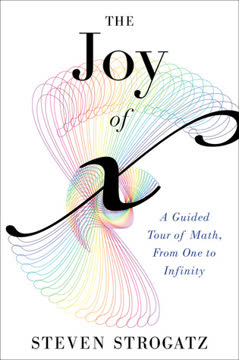

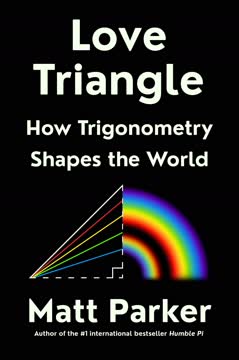
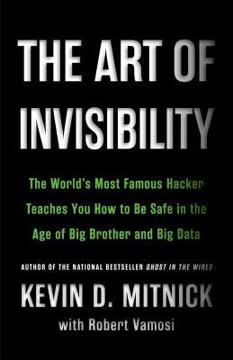
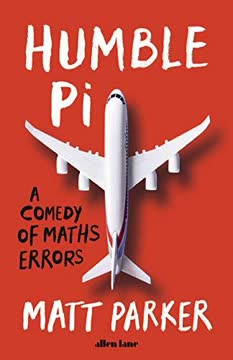

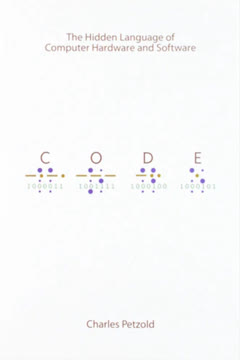
Download PDF
Download EPUB
.epub digital book format is ideal for reading ebooks on phones, tablets, and e-readers.






